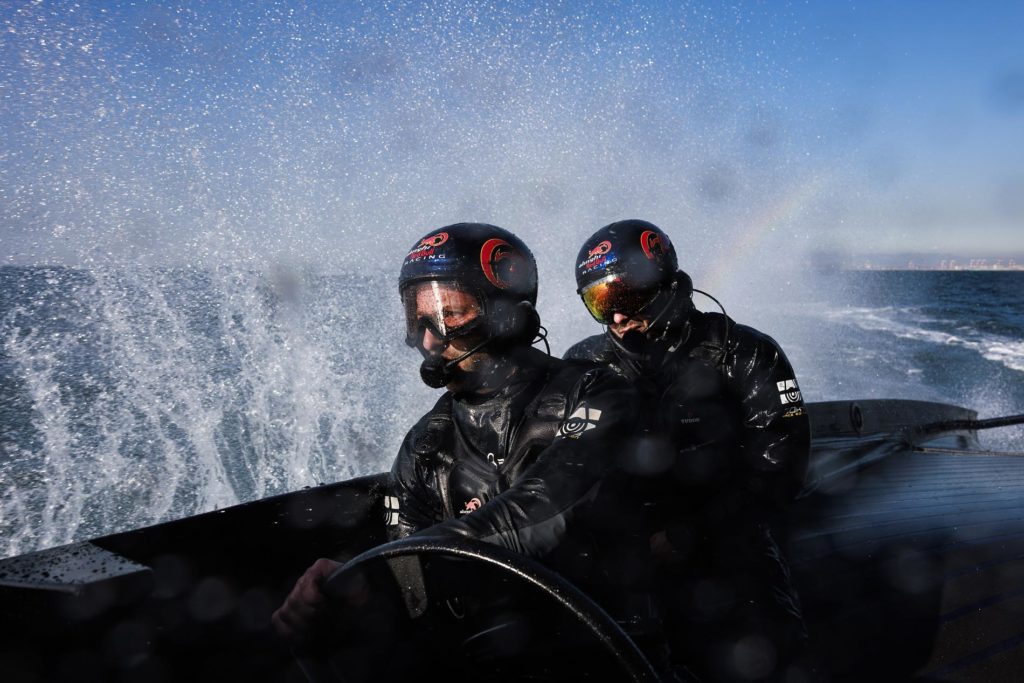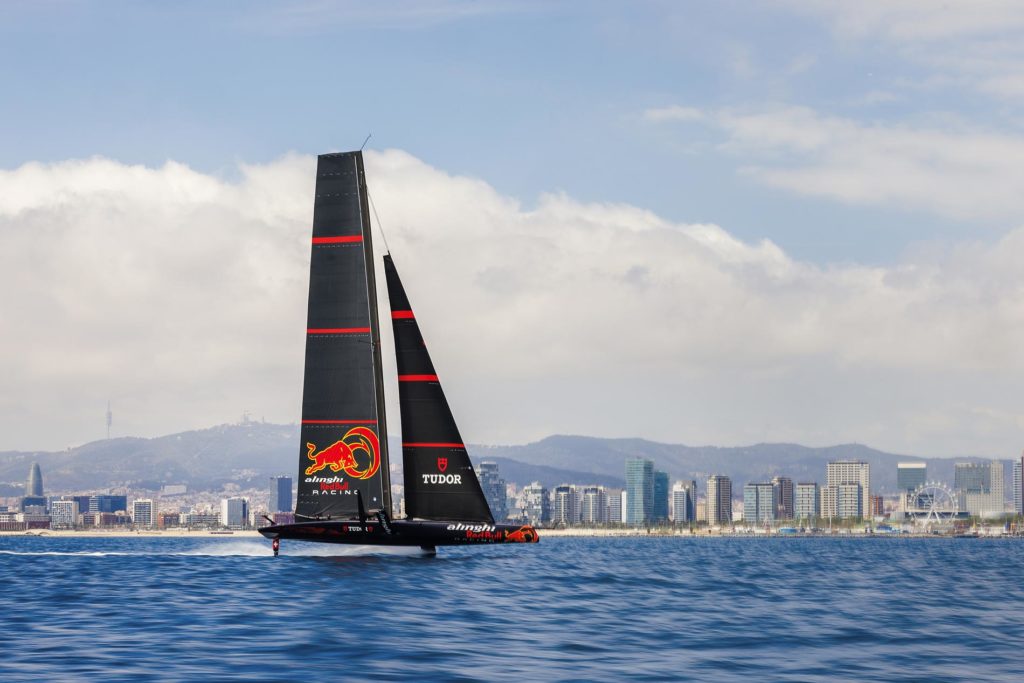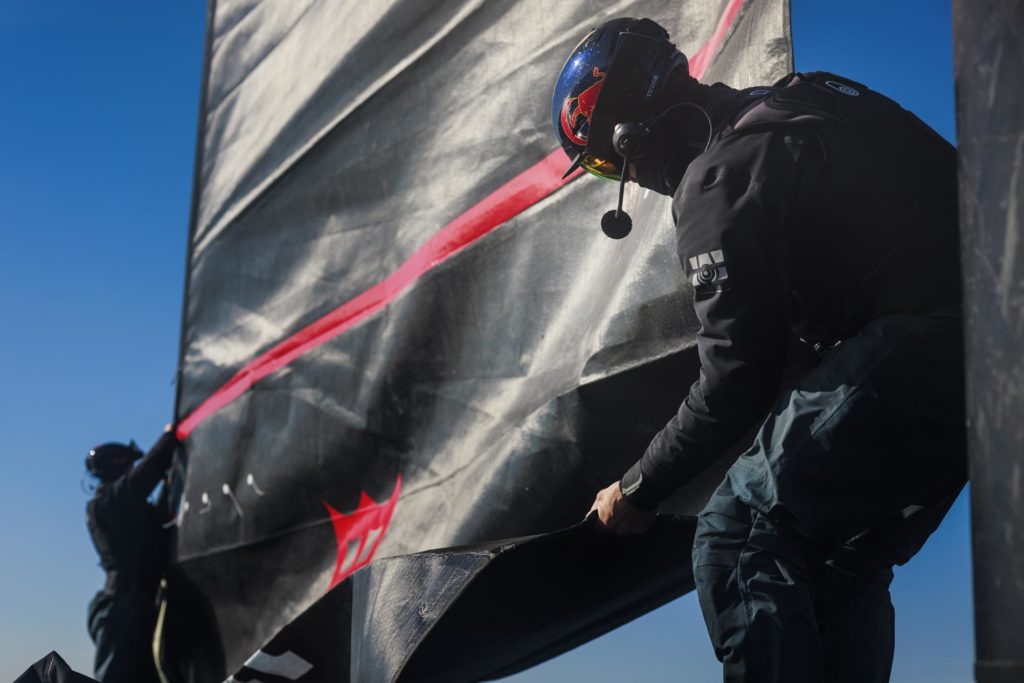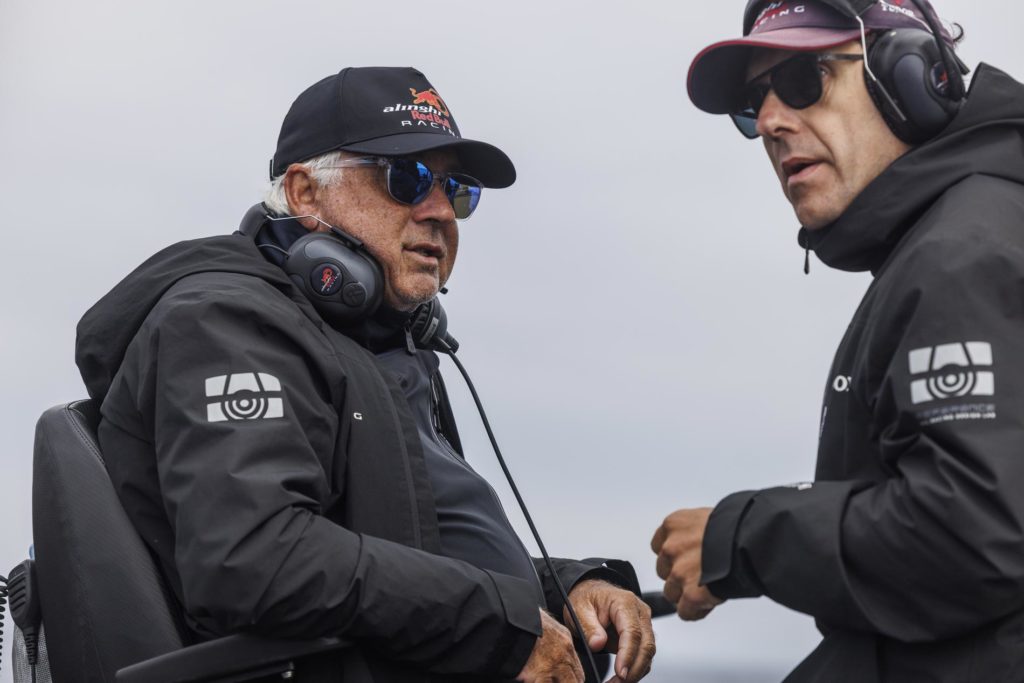Italian Pietro Sibello is a sailing consultant with the Alinghi Red Bull Racing team. With two Olympic campaigns under his belt in the 49er class (Athens 2004 and Beijing 2008), the former mainsail trimmer on Luna Rossa, a finalist in the last America’s Cup, brings a fresh perspective and a wealth of skills to the Swiss team.
Interview by Pierre-Antoine Preti
Photos: Samo Vidic
What exactly is your role at Alinghi Red Bull Racing?
I’m a sailing consultant. My role is to bring the experience of the last Cup to a team that hasn’t raced AC75s yet. We prepare debriefings and planning for the following day. I also work with the design team and coordinate work on the simulator.
After Luna Rossa, you meet another team, another culture?
Mixing cultures, ages and nationalities is always an enriching experience for a sports team. That’s part of my job: to make the most of my previous experiences
the most useful…
Your background is in Olympic single-handed sailing, a series that seems to be the royal road for big flying boats. Can you confirm this?
Yes, there are many sailors who come from the 49er Olympic circuit, including Peter Burling (TNZ) and Francesco Bruni (Luna Rossa). Skiffing is an excellent school for balance, crew coordination and the use of apparent wind. Today, there are other series that have the same characteristics: the Nacras, for example, provide quite a few sailors for the America’s Cup. What’s more, the demands of an Olympic campaign also allow us to build in the strength and know-how ideal for a Cup campaign.
How do you rate the current level of these young Swiss sailors?
Youth has the advantage of motivation and energy. It’s the team’s strong point. An America’s Cup campaign means learning new things every day, and then being able to reproduce them. Even if the beginnings are always difficult, there’s a real desire and speed to learn. The campaign got off to a good start, thanks in particular to the BoatZero, which enabled us to train directly on an AC75. The arrival of the two AC40s then enabled us to develop our racing skills. We’re now ready for the next stage.

How far do we still have to go?
This autumn, the bulk of the work takes place in Barcelona, with the resumption of technical development on the AC40s, which serve as a test platform. At the same time, we’re continuing to simulate all the systems of the future big boat. We’re also constantly improving the performance of the power group. Even if they don’t sail the small boat, they never stop training. On the one hand, they have to improve physically, and on the other, they have to participate in the technical improvement of the power generation systems that enable maneuvering.
Sailing is changing: boats are flying and electronics are dominating. What do you think of this change?
It’s a very positive change. Today, sailing is opening up new horizons. Not just the America’s Cup, but ocean racing and all modern sailing disciplines. Technology is evolving rapidly. So does performance. This doesn’t mean that slower sailing should be left by the wayside. Archimedean boats offer other tactical and strategic pleasures.

Does this mean that the AC40s are tactically limited?
No, not at all! In the very light conditions encountered in Vilanova, there’s really no tactical choice. With the hull in the water, the boat is not maneuverable. You have to try to survive and get the hull up again. But in normal wind conditions, the match race takes over. At the Cup, there will be duels of tacks with flying boats as well as with slower boats.
On the AC40, the double-skinned mainsail or “softwing” is a new feature. Does it change the trimmer’s job?
It’s complicated at first. You have to trim a sail with two skins. You also have to get used to the soft aspect of the sail, as opposed to the rigid wings used up to now. But in the end it’s all very equivalent. Above all, you have to get used to the rotation of the mast, which is very important on the AC40. A good sailor can easily adapt to this.

Somewhere between the machine and the human, is the sailor still essential to the manoeuvre?
The faster you go, the faster you have to decide. Sailors have less time to think. Mental decisions must become automatic. Electronics make this easier. But while the machine gives you the targets, you mustn’t forget that conditions are always changing. And only humans are capable of this speed of adaptation. Today, sailors are still indispensable to the smooth running of the boat.
BRAD BUTTERWORTH
“We need to organize more regattas”.
With Vilanova and Jeddah, the America’s Cup is raced in One Design. Could the Cup become one-design one day?
Not in my lifetime. The America’s Cup is a competition in naval architecture. In this 37th edition, there will be fast boats and slow boats, just like every other time.

There are two big flying boat circuits today. The America’s Cup and SailGP… Could one one day bury the other?
I really like SailGP, which is a fantastic, well-organized product. For the past two and a half years, it has naturally occupied the media space left empty by the absence of competition in the America’s Cup. It’s no good. Cup boats are expensive, and budgets are high. These investments don’t pay off. We need to do a better job and sail more. We need to organize more intermediate regattas.

